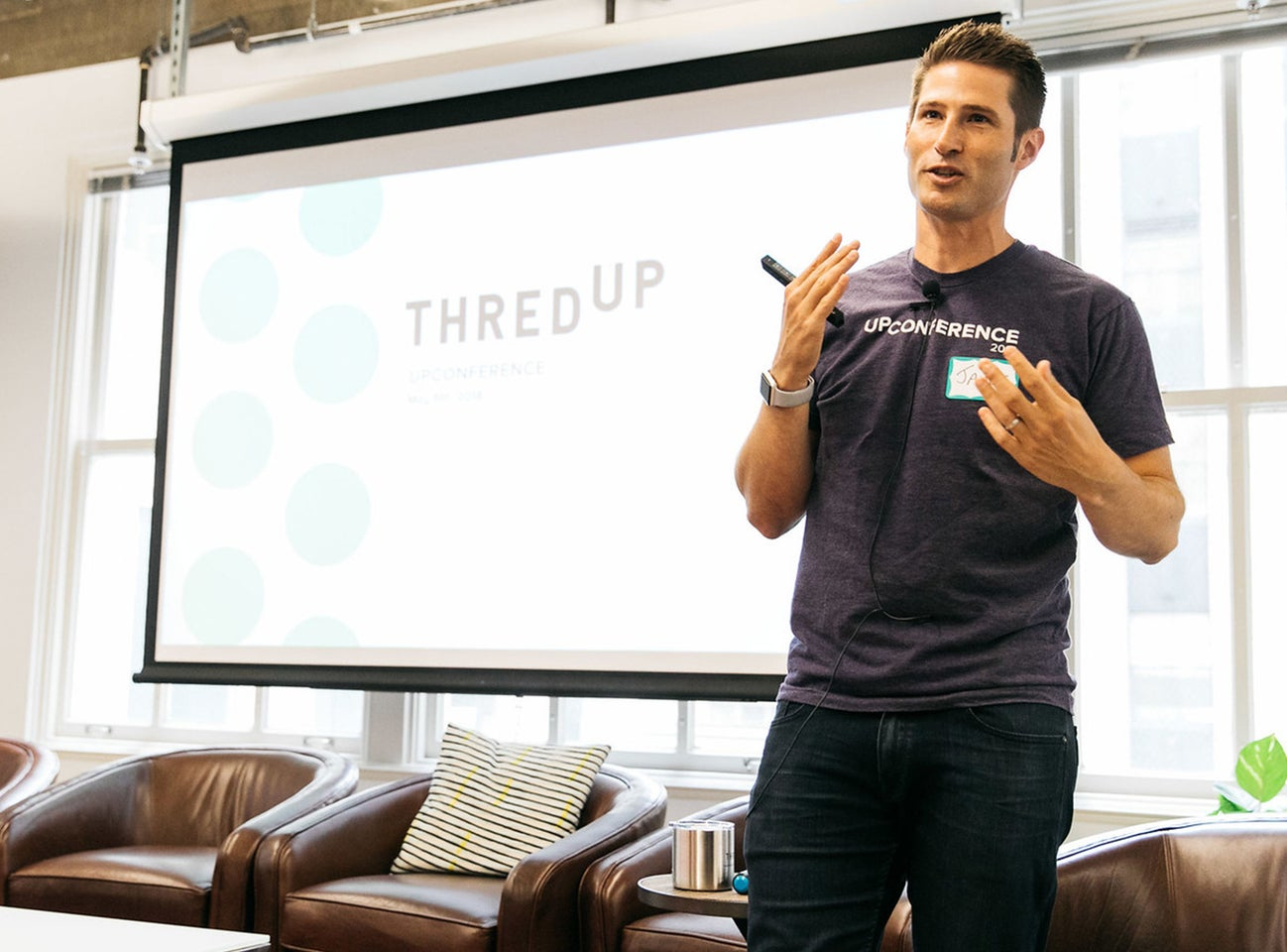Convenience, personalization and transparency are the qualities that make online shopping so appealing to customers. Such attributes were not to be found in thrift shops which were favored only by those willing to invest the time in searching through aisles and piles of merchandise in search of something that looked good and fit. But thanks to digitalization, the thrift shop has been reimagined to appeal to the new generation that shops online and expresses concern for the environment.
Ten years ago, thredUp brought in the capabilities of big data, AI, and mobile technology to transform the thrift shop experience from hunting through stores of cast-offs to a platform that brings up just what you’re looking for with the offer of free shipping. Adapting the model customers have come to expect from shopping on Amazon, algorithms work to deliver tailored recommendations while the shopper can feel virtuous about saving money and the planet.
How it gets the clothes
Unlike most other online sellers that manufacture their own goods or purchase from wholesalers, thredUp has to get its product from individuals. To that end, it offers kits to receive the items people would normally donate to a thrift shop with the option of payment or donations for charity.
While thrift shop donations typically leave it up to the individual to assign values for the tax deduction, thredUp is very clear on the scale it applies to assess how much it will pay for the clothes it accepts for sale. It does warn them that they typically only accept 40 percent of the items sent and can either charge for shipping back unwanted items or pass them on for charity.
Even if they don’t make a great deal of money on clearing out their closets, though, those who do send their clothes off can feel good about recycling rather than wasting. They also can feel good about getting their wardrobes more streamlined and organized as per the gospel of Marie Kondo.
Taking the thrift out of the shop with digitization
In its 2019 Resale Report, thredUp described how it is perfectly positioned to attract “first-time thrifters.” In fact, “the younger generations are leading this charge, with millennials and Gen Z adopting secondhand 2.5x faster than other age groups.”
It projects continued growth in resale and has the numbers to back it up. In 2018 nearly two thirds off women surveyed said they had bought or would be willing to buy secondhand products as compared to just over half in 2017 and 45 percent in 2016.
Under the heading “The Innovation & Technology That Created a Resale Revolution,” it lists the four components involved in the business:
1. Unlocking an endless supply chain
Innovations like the thredUP Clean Out Kit make it easy to sell from home, attracting millions to participate in resale for the first time.
2. Creating value with data science
Sophisticated algorithms assign resale value at scale. thredUP uses millions of historical data points to instantly determine what something is worth.
3. Massive volume & scale with automation
Resellers must be efficient when photographing, listing, and storing infinite SKUs. thredUP automates processing of up to 100K one-of-a-kind items a day.
4. Technology to shop from anywhere
Mobile apps and personalization have made buying used clothes as easy as buying new. Convenience and trust has attracted a new generation of secondhand shoppers.
How it achieves personalization
Like any other online seller, thredUp is rather relentless in its messaging and tries to entice a purchase through discounts and other special offers once it obtains your email address. Since putting in my email, I receive daily messages, including one intended to entice me into the personalized boxes.
You could also shop by discount, ranging from 20 to 50 percent off. It also lets you select the brands you favor.
What’s interesting, though, is that it limits you to only one preferred style. I would have preferred having multiple options here, too, and don’t know why the system didn’t allow that. Certainly, we have different wardrobe needs for different moods, and one who is professional during the week may want to be glam or bohemian on the weekend.
To get further insight into personal style, additional option questions on preferences include the following three items:
Anything we should avoid?
Tell us about your lifestyle and what you’re looking for.
Feel free to share a Pinterest board.
Actually, some regular online retailers could take a lesson from such questions in narrowing down search results more effectively. Still, it is possible that the predictions of what you would like could turn out wrong, which is why the easy return policies that have become standard for online retailers are in place here, as well (with the exception of the Rescues).
Taking a page from the Amazon book that offers “try before you buy” for Prime Wardrobe, the boxes deliver a selection of clothing in your preferred size and style with free shipping and free return for a $10 deposit. To help the accuracy of the selections offered, it asks for some optional personal details, including age, height, and weight.
Making thrifty trendy
“With cutting-edge technology and fancy logistics, we’re shattering stigmas and converting skeptics,” declares thredUP on its About Us page.
In its first incarnation in 2009, it was limited to a “men’s shirt swapping company,” a solution that James Reinhart, the Co-Founder and CEO of the company, thought of for his own under-utilized wardrobe. It has since expanded into buying and selling clothes for women and children, boasting over 35K brands — from Gap to Gucci — at up to 90 percent off retail prices.
It positions its own brand as offering the best option for shopping “with the smallest impact on the planet, your time, and your wallet.” It offers a paradigm shift that is mean to redirect “a new generation of shoppers to think secondhand first.”








